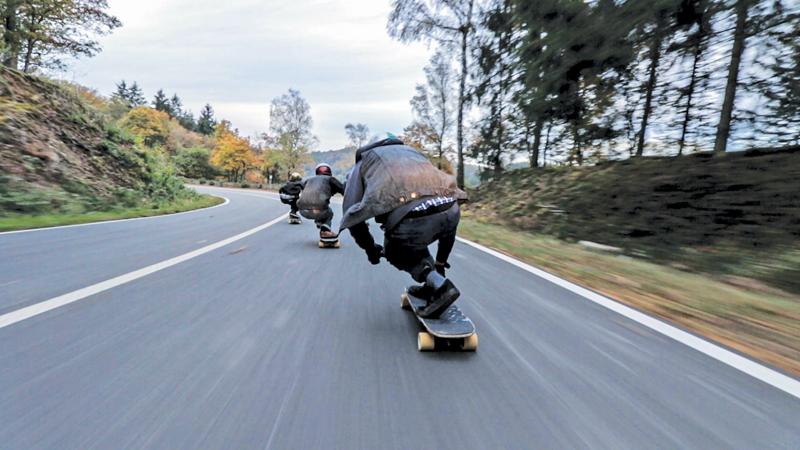
Skateboarding is a American sport in which a rider rides and performs tricks on a skateboard, a flat board with rollers on the bottom. Though it started out as a American children’s pastime, it is now a lifestyle for millions around the world, forming official associations and massive communities. Skateboarding is now an industry worth billions in revenue. Skateboarding is also a popular competitive sport, with enough recognition to be officially represented in the 2020 Tokyo Summer Olympics.
 Though the concept of the Skateboard is relatively modest, a simple board with wheels, the idea did not truly come into being until the 40s. It’s precursor, the kick scooter, was around even earlier and is theorized to have inspired the skateboard, though no one person could be attributed with that idea. However, while children commonly played around with skateboards, they were popularized by surfers who sought a similar experience to surfing on the ground. This led to it initially being called “Sidewalk Surfing”.
Though the concept of the Skateboard is relatively modest, a simple board with wheels, the idea did not truly come into being until the 40s. It’s precursor, the kick scooter, was around even earlier and is theorized to have inspired the skateboard, though no one person could be attributed with that idea. However, while children commonly played around with skateboards, they were popularized by surfers who sought a similar experience to surfing on the ground. This led to it initially being called “Sidewalk Surfing”.
As a result of its popularity with surfers, the first known manufacturers of skateboards all sprung up in California. Though skateboarding teams were formed, exhibitions were held and were covered by all sorts of media, the sport did not take off too well and its popularity soon died down.
Mode of transport
In the 70s, the invention of more durable wheels and boards, led to the skateboard to become a practical mode of transport. More complex tricks and maneuvers became possible, which in turn inspired more competitions.
It was in this era that skateboarding would truly flourish, with skateparks being built and new skateboard companies popping up with new designs and innovations. By the time the 80s rolled around, skateboarding had become a global phenomenon. Street-style skating opened up a brand new world for skaters, and the demolition of skateparks was no longer as devastating to the sport as it used to be. It was in this era that skateboarding greats like Tony Hawk started their careers.
The media and culture that grew around skateboarding helped boost the sport’s popularity immensely. Skate films like Thresher and events like the popular X-Games spread the culture of skateboarding and films like Back to the Future which heavily features skateboarding has been noted to have directly inspired many skateboarding legends.
Video games were also massively influential, with games like Tony Hawk’s Pro Skater series deepening the interest of kids in the sport, even if they didn’t end up participating. The popularity that came from these factors was such that in the 2000s, it was recorded that more kids in America were skateboarding than playing baseball, America’s beloved national sport.
Much like all street sports, however, skateboarding was not without its controversies. Though skate parks were built to contain skaters and keep them happy, people became concerned about them attracting crime and drugs. This led to skateparks being demolished which pushed skaters to the streets.
Soon, public urban terrain began to get damaged by skate tricks. Bans and anti skating measures were put in place against skating. Despite this, skateboarding persisted, making rebellion and counterculturalism an essential part of skateboarding culture. This rebellious attitude made corporate interference extremely divisive, which led to major portions of the community to reject corportized skating events and teams.
Even the acceptance of skateboarding into the Olympics was divisive as the community saw it more as an art than a sport to be judged, though others saw its potential in drawing more people to it.
